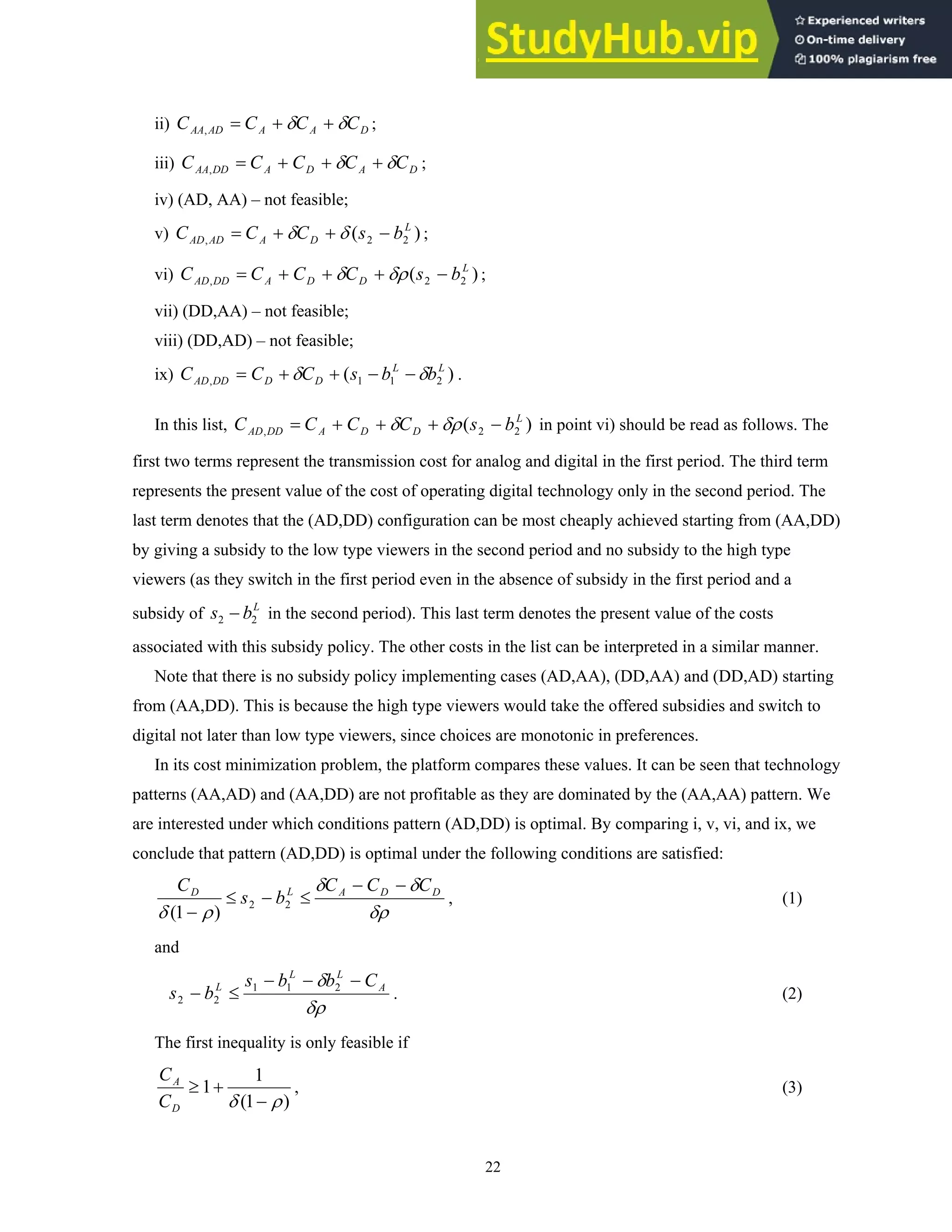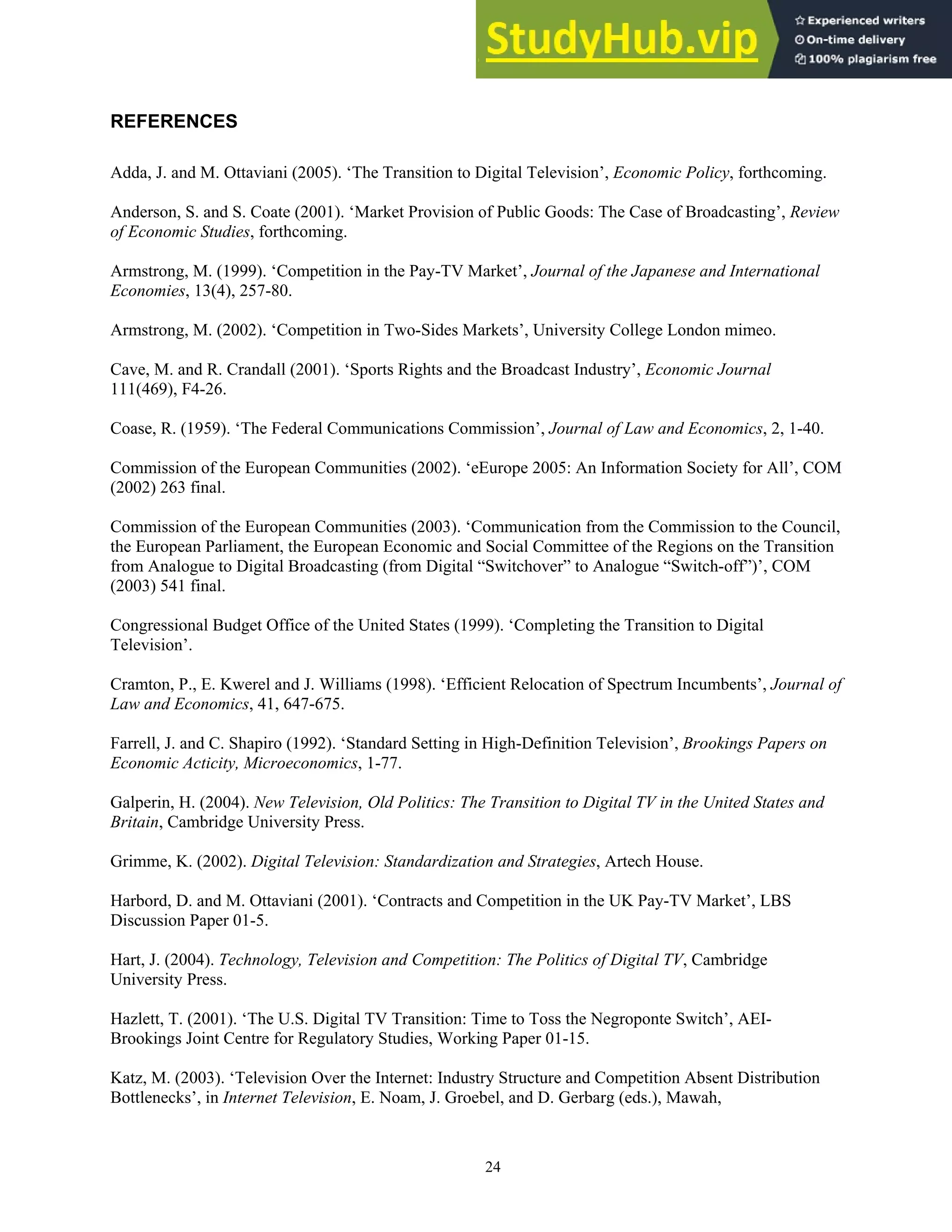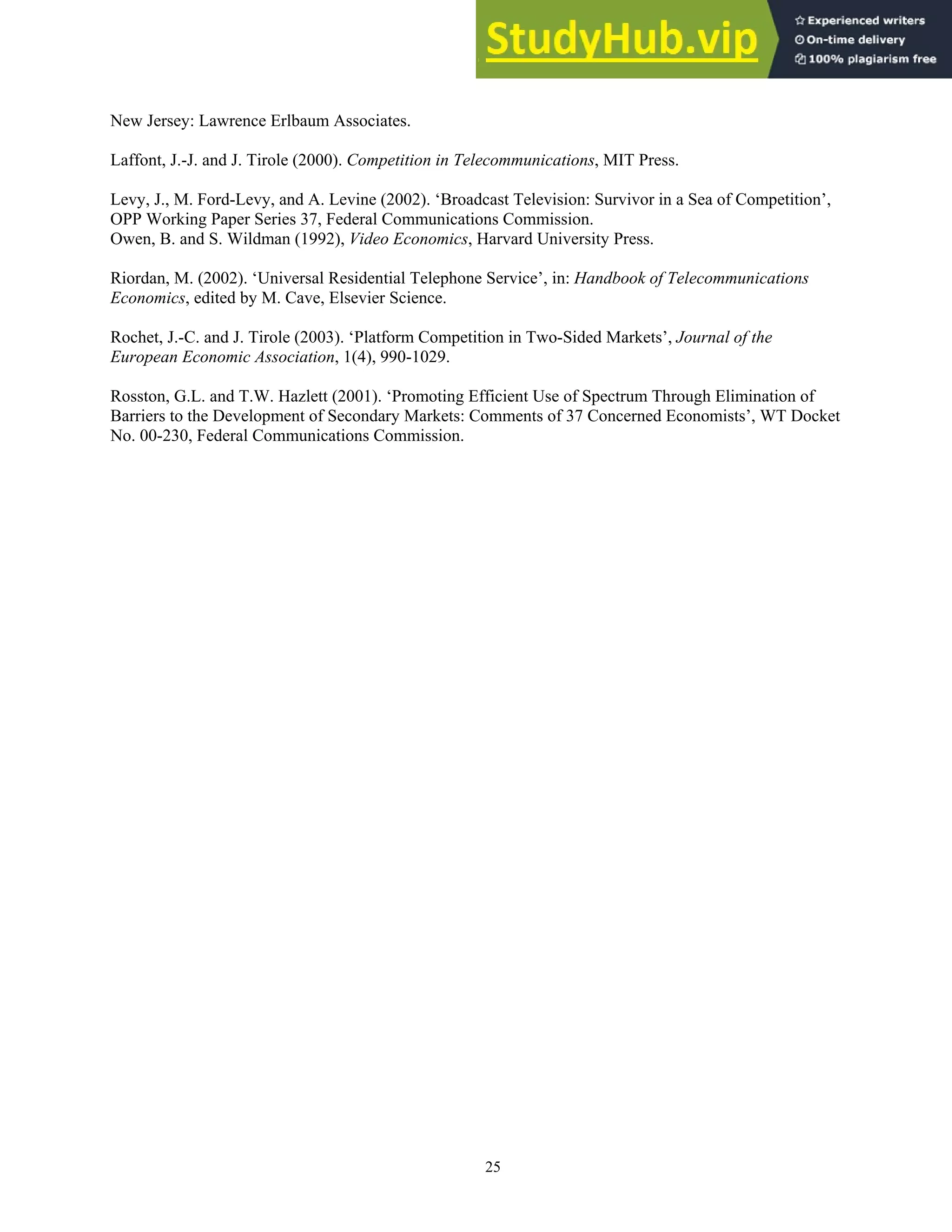This document summarizes the challenges involved in switching from analog to digital television. It discusses how the transition affects different market participants like broadcasters and viewers unevenly. Broadcasters must invest in new digital infrastructure while viewers must buy new equipment. The transition is complicated by television's non-rival nature, which means broadcasting the same content on both analog and digital wastes resources. Governments also aim to ensure universal access to free television, limiting how quickly the analog signal can be turned off. Overall, coordinating the costs and benefits across these groups during the transition poses business and policy issues.



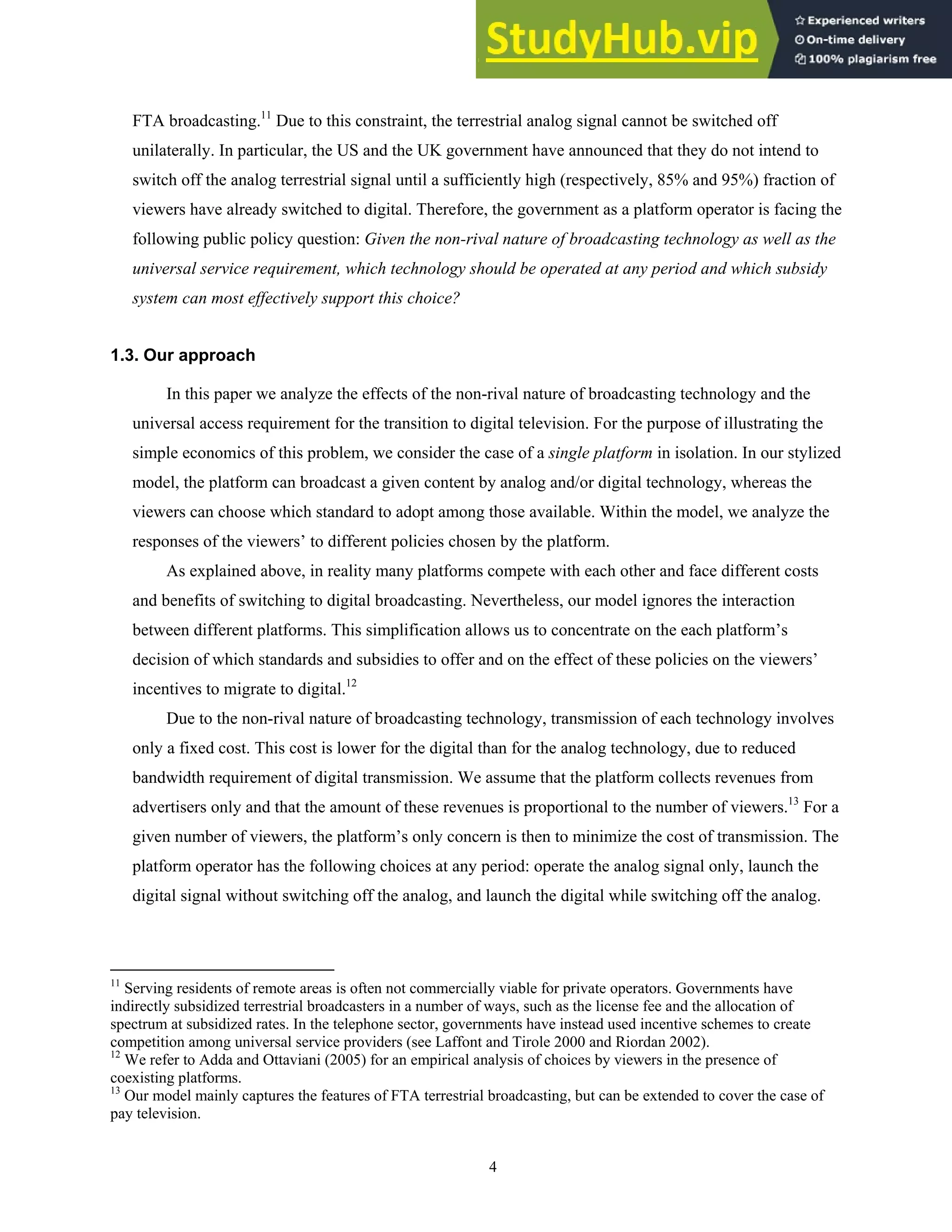

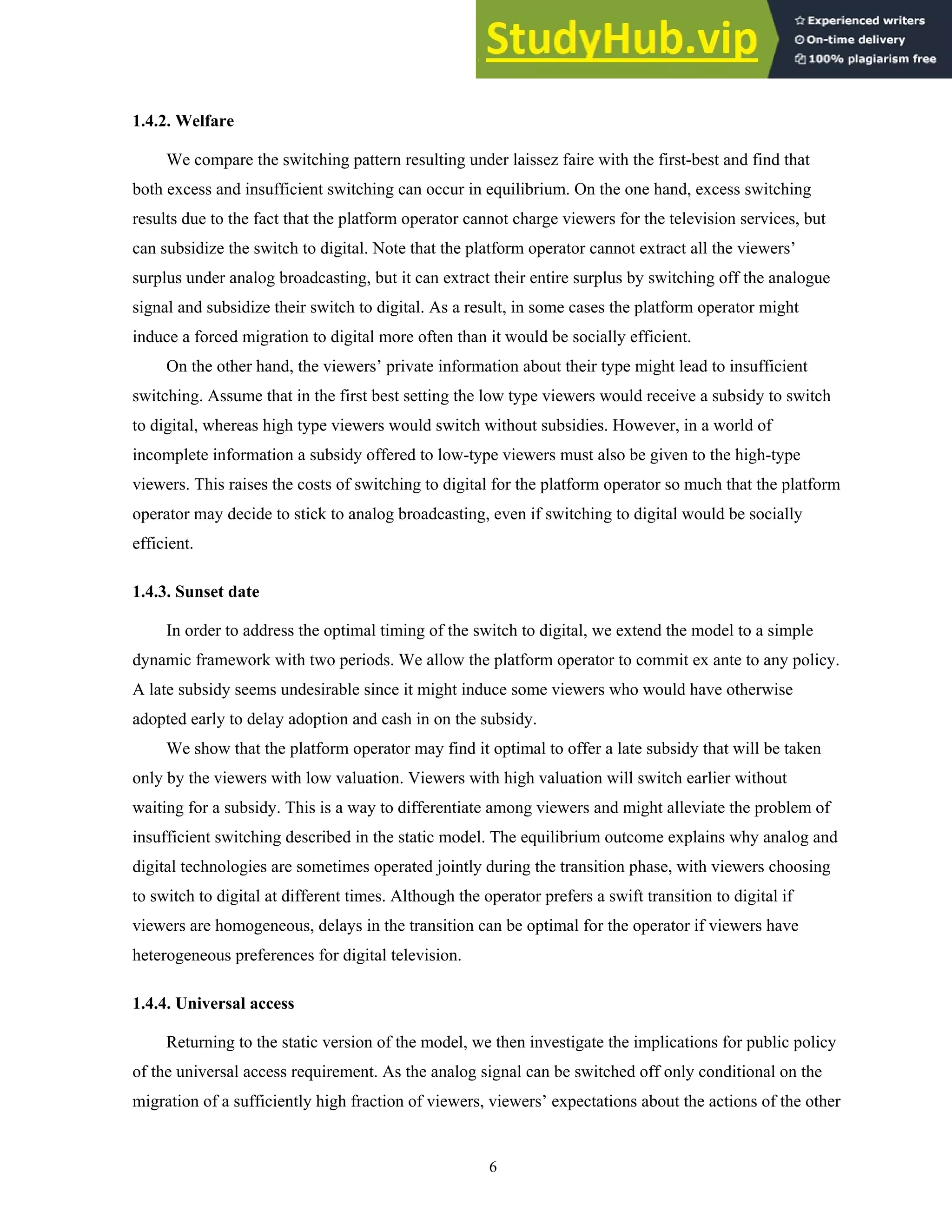



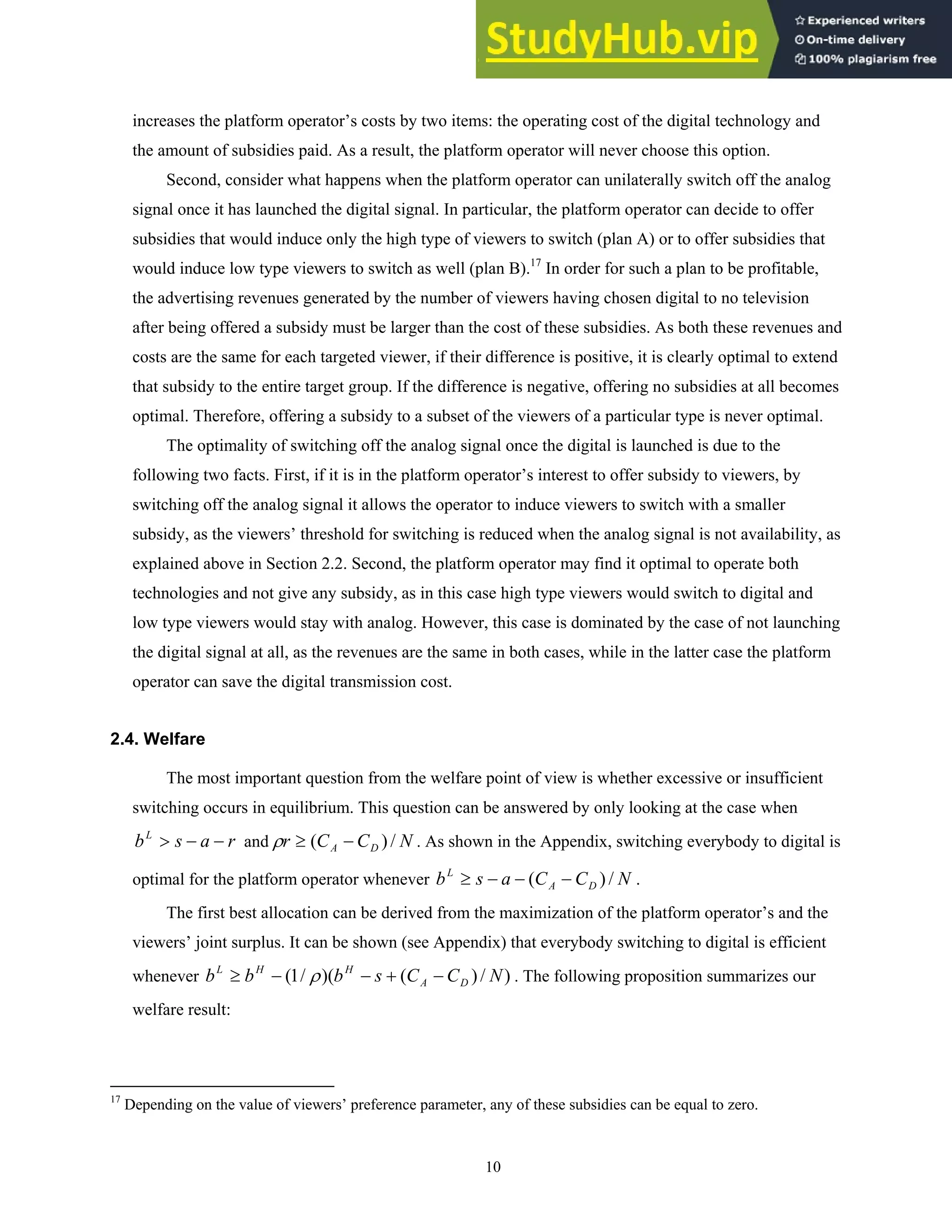
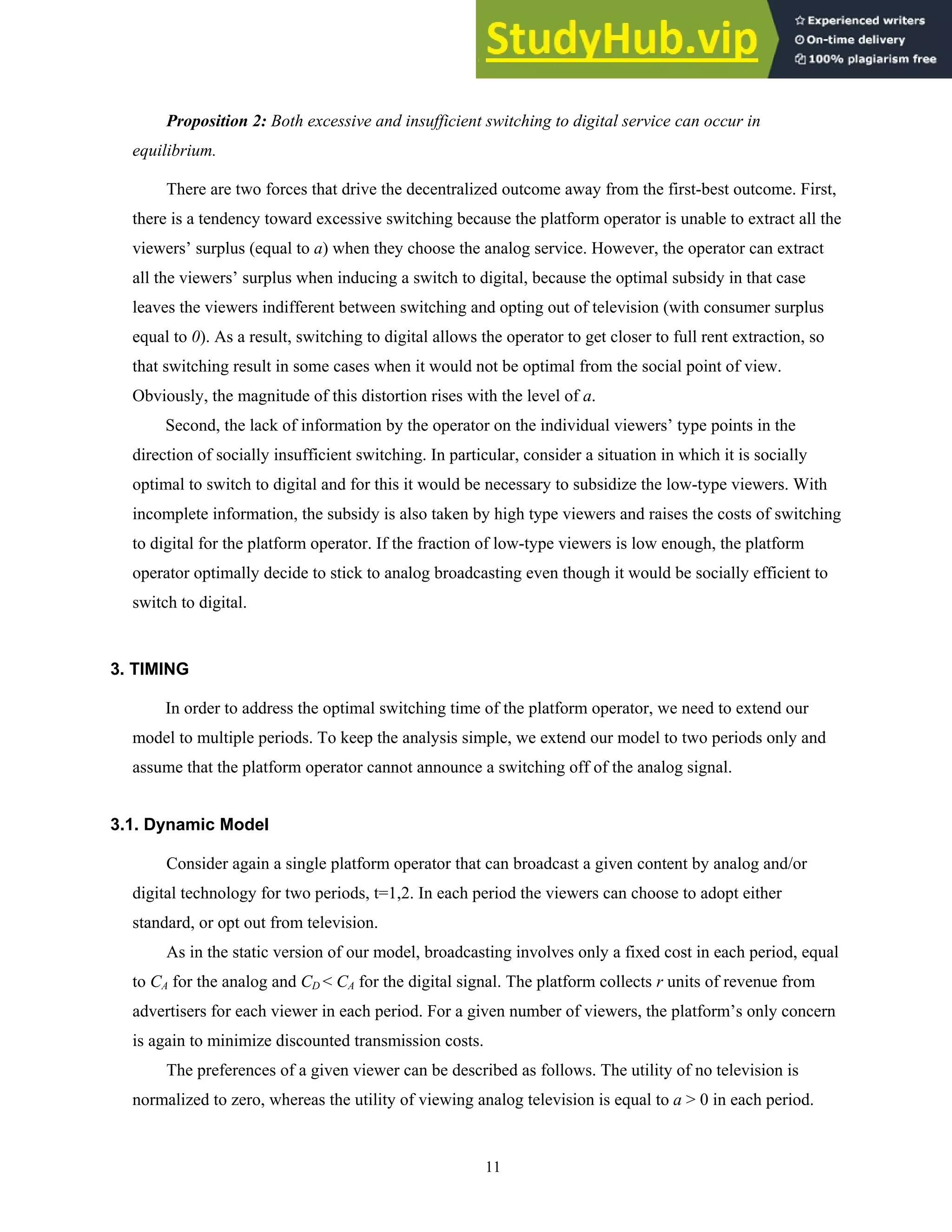




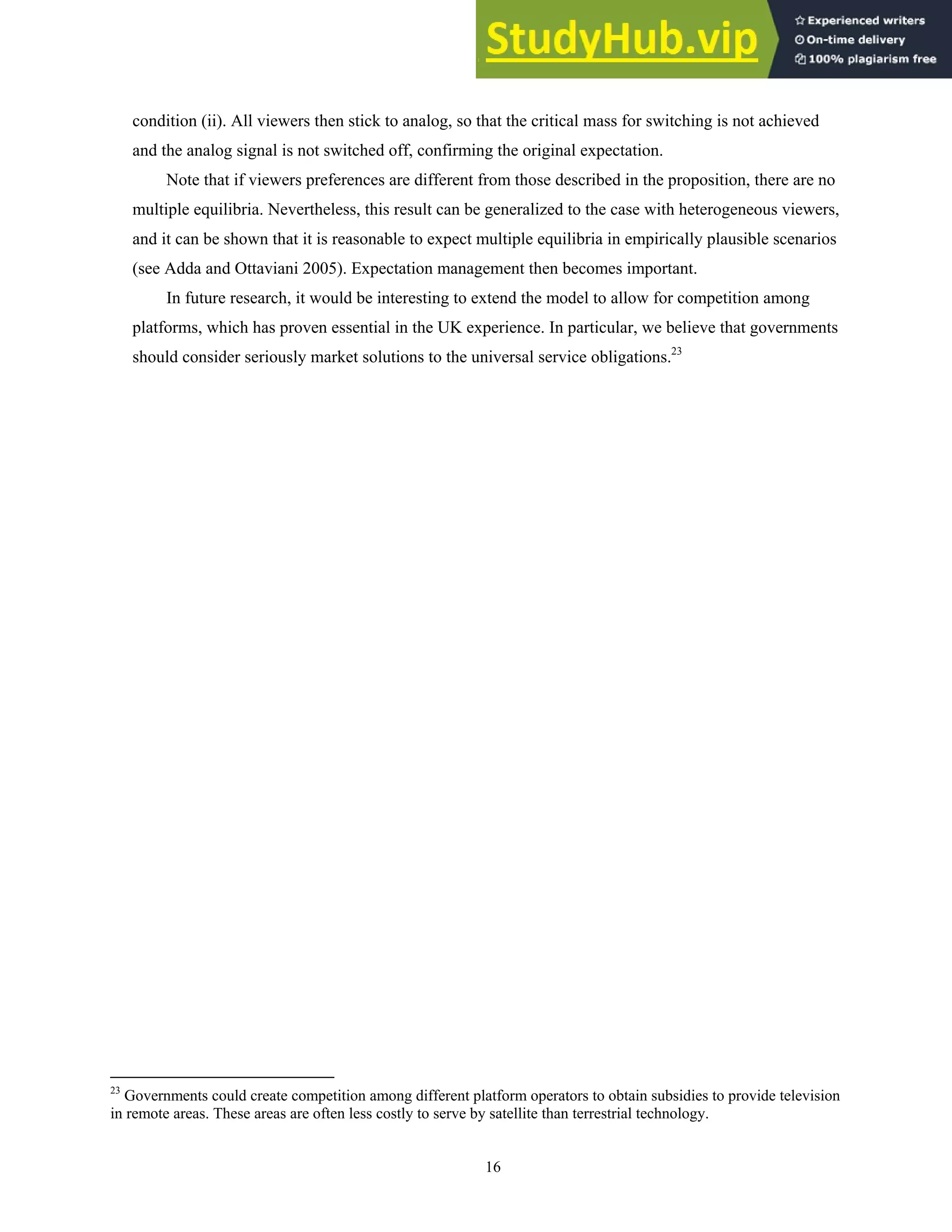


![19
shows that it is never optimal to subsidize a fraction of the viewers targeted by a subsidy, the first
claim of the proposition. This completes the proof of Proposition 1 for case (i) with a
s
b
b H
L
−
<
< .
Cases (ii)-(vi) can be analyzed in a similar way. For the second part of the proposition, note that in
cases (i), (ii), and (ii) the platform operator can reach the low type of viewer with the analog signal and
save the cost of the subsidy needed to induce the low type of viewer to switch to digital, by
simulcasting the analog and digital signal. But this cannot be optimal for the operator, because
transmitting only analogically would result in a savings of the digital transmission cost and eventual
subsidy to the high type.
Proof of Proposition 2:
Let us first derive the platform operator’s optimal choice for the case presented in the proof of
Proposition 1. Assume that 0
)
( >
−
−
− L
b
a
s
r , or equivalently, that r
a
s
bL
−
−
> . This implies
that 0
)
( >
−
−
− H
b
a
s
r and therefore, only the following expressions have to be compared (see
proof of Proposition 1):
1) Offer analog only and no subsidy: A
C
Nr − ;
2) Offer digital only and low subsidy: D
H
C
b
a
s
r
N −
−
−
−
− )]
(
[
)
1
( ρ ;
3) Offer digital only and high subsidy: D
L
C
b
a
s
r
N −
−
−
− )]
(
[ .
It can be seen that whenever
N
C
C
r
a
s
b D
A
H −
−
−
−
+
−
<
ρ
ρ
ρ
1
1
1
, option 1) dominates
option 2). If we assume N
C
C
r D
A /
)
( −
≥
ρ , then condition
N
C
C
r
a
s
b D
A
H −
−
−
−
+
−
<
ρ
ρ
ρ
1
1
1
is satisfied automatically as we are in case a
s
bH
−
< .
The platform operator chooses option 3) over option 1) whenever N
C
C
a
s
b D
A
L
/
)
( −
−
−
≥ .
Note that N
C
C
r D
A /
)
( −
≥
ρ also implies N
C
C
r D
A /
)
( −
≥ , which in turn implies
r
a
s
N
C
C
a
s D
A −
−
≥
−
−
− /
)
( , or equivalently, that there exist cases when choosing analog is
optimal. In particular, the platform operator chooses analog whenever
N
C
C
a
s
b
r
a
s D
A
L
/
)
( −
−
−
<
<
−
− and chooses digital whenever
a
s
b
N
C
C
a
s L
D
A −
<
<
−
−
− /
)
( .
Let us now turn to the first best outcomes. The joint surplus of the viewers and the platform
operator for the four possible allocations are:](https://image.slidesharecdn.com/1switchingtodigitaltelevisionbusinessandpublicpolicyissues-230805195307-acda7dc3/75/1-Switching-To-Digital-Television-Business-And-Public-Policy-Issues-19-2048.jpg)
![20
I. All view analog: A
C
Nr
Na −
+ ;
II. High type views digital and low type views analog: D
A
H
C
C
Nr
s
b
a
N −
−
+
−
−
+ )]
)(
1
(
[ ρ ;
III. All view digital: D
H
L
C
Nr
s
b
b
a
N −
+
−
−
+
+ ]
)
1
(
[ ρ
ρ ;
IV. High type views digital and low type views no television:
D
H
C
Nr
s
b
a
N −
−
+
−
+
− )
1
(
)
(
)
1
( ρ
ρ .
Since we are considering the case with a
s
b
b H
L
−
<
< , we also have
N
C
s
b D
H
ρ
−
+
<
1
1
, so
that II) is dominated by I). In addition, IV) is dominated by III), since r
a
s
bL
−
−
≥ .
It can be seen that is efficient for everyone to switch to digital whenever the joint surplus in III)
is higher than in I), i.e. whenever )
/
)
(
(
1
N
C
C
s
b
b
b D
A
H
H
L
−
+
−
−
≥
ρ
. Since
a
s
b
b
r
a
s H
L
−
<
<
<
−
− , we also need condition r
N
C
C
a
N
C
C D
A
D
A
−
−
>
>
−
for having both
cases when analog or digital is socially efficient. In particular, analog is socially efficient whenever
N
C
C
s
b
b
r
a
s D
A
H
L −
−
<
−
+
<
−
− )
1
( ρ
ρ and digital is is socially efficient whenever
a
s
b
b
N
C
C
s H
L
D
A
−
<
−
+
<
−
− )
1
( ρ
ρ .
Excessive switching occurs whenever the threshold for the decentralized outcome is lower than
the corresponding threshold for the first-best outcome, i.e.
N
C
C
a
s
N
C
C
s
b
b D
A
D
A
H
H
/
)
(
)
/
)
(
(
1
−
−
−
>
−
+
−
−
ρ
, or equivalently
a
N
C
C
s
b D
A
H
ρ
ρ
−
+
−
−
<
1
. By taking into account that H
b
r
a
s <
−
− we also need to have
N
C
C
r
a D
A −
>
+
− ρ
1
1
. For example, excessive switching occurs when
ε
ρ
ρ
−
−
−
+
−
−
= a
s
a
N
C
C
s
b D
A
H
,
1
min and ε
+
−
−
−
= )
(
1
D
A
L
C
C
N
a
s
b .](https://image.slidesharecdn.com/1switchingtodigitaltelevisionbusinessandpublicpolicyissues-230805195307-acda7dc3/75/1-Switching-To-Digital-Television-Business-And-Public-Policy-Issues-20-2048.jpg)

